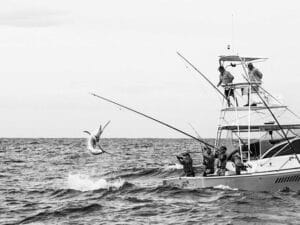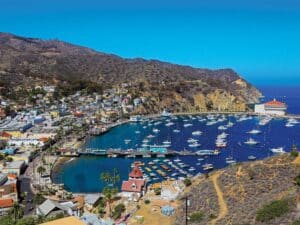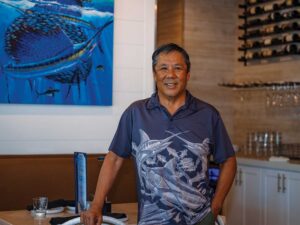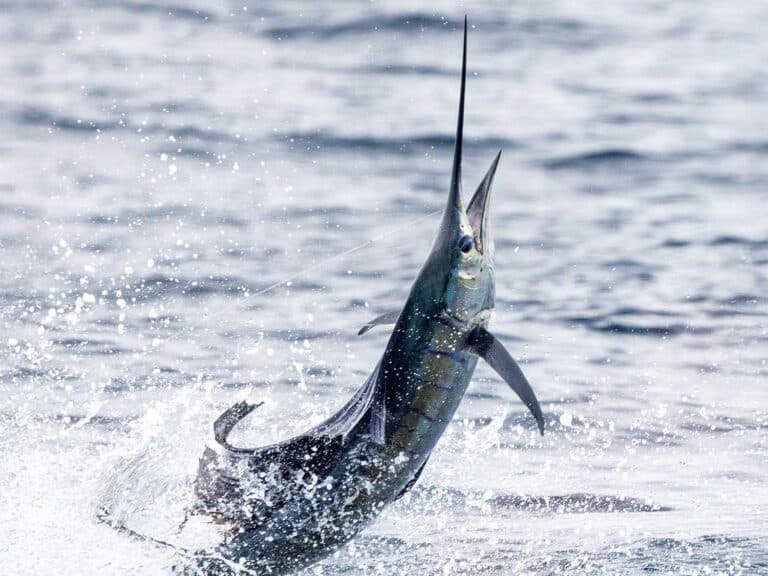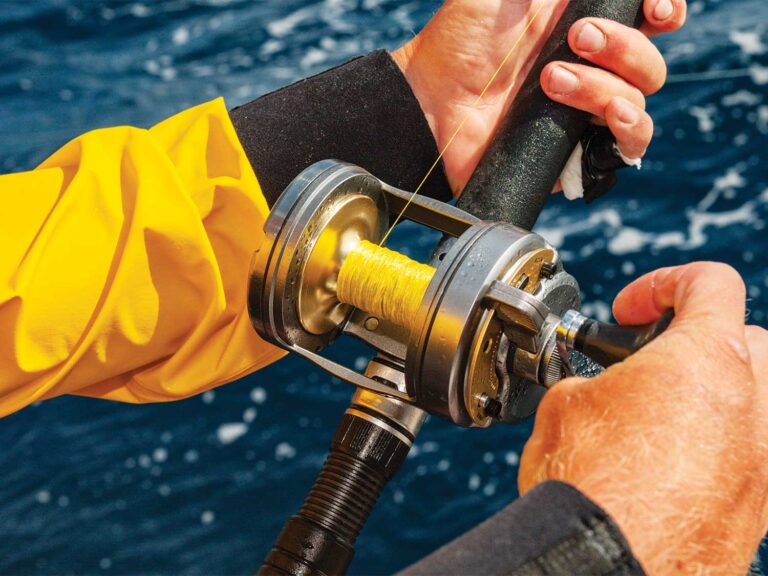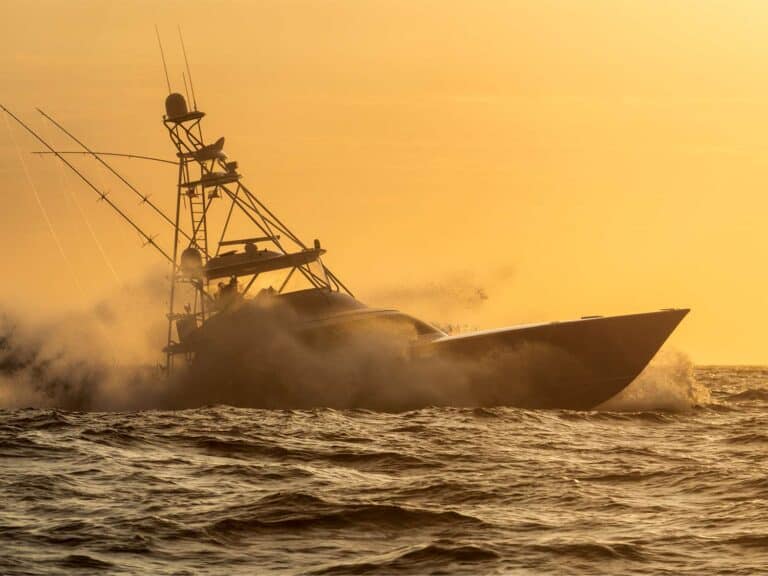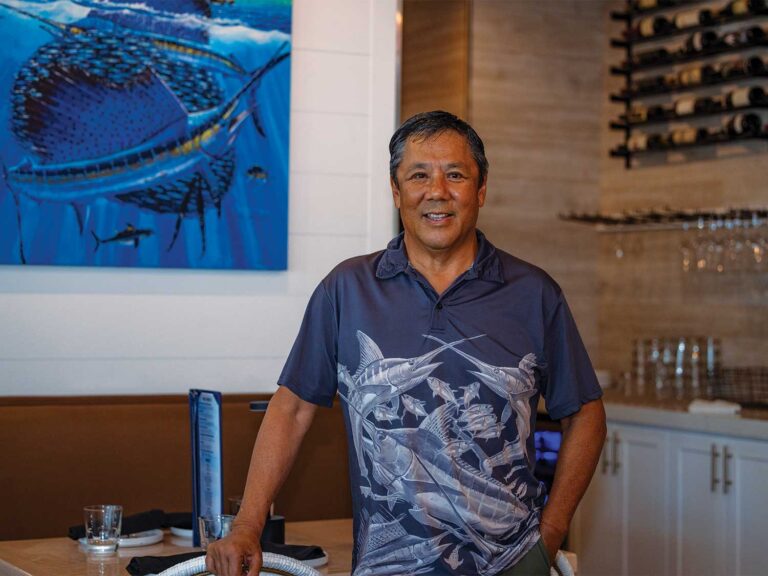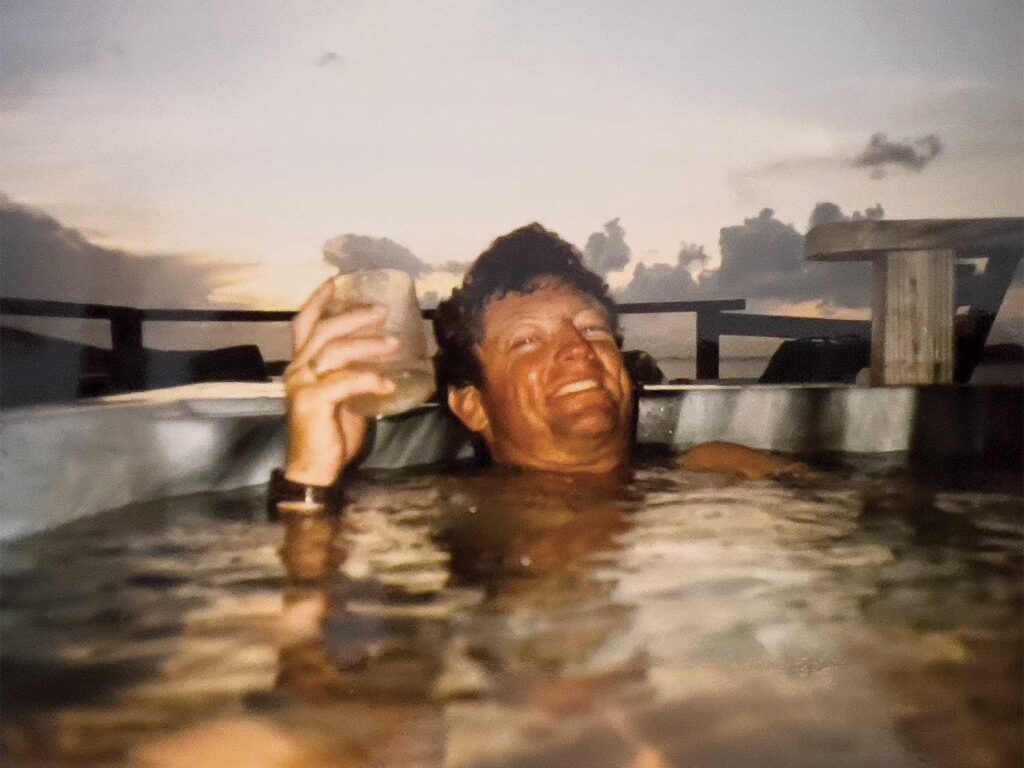
Subscribe to Marlin magazine and get a year of highly collectible, keepsake editions – plus access to the digital edition and archives. Sign up for the free Marlin email newsletter.
The terms legend and GOAT get tossed around so often these days that they’ve lost some of their meaning. But if anyone in our world truly deserves such titles, it’s Tim Choate. Quite simply, Choate is one of the most influential figures in billfishing over the past 50 years—and likely the one who’s had the most fun along the way.
From pioneering world-class fisheries in Costa Rica, Guatemala, Brazil and the Galapagos to reshaping how we think about conservation and the global role of recreational fishing, Choate has left an indelible mark on the sport. He’s a larger-than-life character—part entrepreneur, part advocate, part showman—and he’s changed the game at every level. Whether it was launching remote lodges or helping to steer major legislation through Washington, Choate has always been two steps ahead, connecting the dots no one else could.
I’d known of Choate for years—quick handshakes, stories at the bar, and the legends from his early days with Ron Hamlin, Brazaka and Peter B. But it wasn’t until I sat down with him one-on-one that I truly grasped the brilliance and depth of his impact. His story is almost too big to tell in full—but what’s clear is that Tim Choate isn’t just part of the sport’s history. He helped write it.

Transformative Beginnings
Born in New York City in 1948 to a Hollywood actress and a successful businessman, Choate’s early life took a new direction when his mother, looking for a healthier and more adventurous environment for her son, began taking him on regular vacations to the Florida Keys.
“We’d go down for spring break, then summer, then fall,” Choate recalls. “Eventually, we were spending most of our time there, and finally, we made the move full time.”
For a kid used to the murky waters of Long Island Sound, the Keys were a revelation. “I fell in love with that place very quickly,” he says. “It was so great to see clear water where you could see 30, 40, even 60 feet down and actually identify fish. That blew my mind.”
His passion quickly turned into obsession. Mentored by local legends like Capt. Dick Williams, Cecil Keith and Ellis Shires, Choate learned the ropes on the flats and reefs. But it was Capt. Buck Stark who introduced him to the world of offshore fishing and guided Choate in his formative years. The two became close, traveling across the Caribbean and Mexico in search of marlin and sailfish.
Those early years were foundational—establishing not just his fishing skills, but also the relationships and ethos that would define his life on the water. Speaking with Choate, you get the sense that Stark almost served as a father figure during those formative years. “Buck was more than a mentor; he taught me how to look at fishing as both an art and a science. He taught me about life.”

Heeding the Call
One of the more surprising things I learned in preparing this story was that Choate not only earned a law degree from the University of Miami in 1973, but he also practiced law for several years. It wasn’t just a footnote—he interned at the state attorney’s office in Miami-Dade County under Janet Reno and later worked at a civil law firm. “Having a background as a lawyer has helped me stay out of trouble over the years,” he jokes.
But long before he left law for good, Choate was already knee-deep in the boat world. A college friendship with Mark Phillips—whose father, Herb, owned Striker Aluminum Yachts—gave Choate a front-row seat to the booming boatbuilding industry. During tough financial times for the company, he stepped in and began running the operation.
Managing Striker provided Choate with a crash course in the marine industry and international logistics. It also opened his eyes to the possibilities of life on the water. Eventually, the draw of adventure led him away from the office and into the cockpit, where he signed on as a mate aboard top-tier boats making the seasonal circuit from Florida to Venezuela, the Bahamas and back.
“I preferred to stay in the cockpit,” he recalls. “You could change boats with less drama, and you were at the heart of the action. That’s where you really learn the sport.” Those years were spent grinding it out—early mornings, rough crossings and endless rigging. But to Choate, it was invaluable.
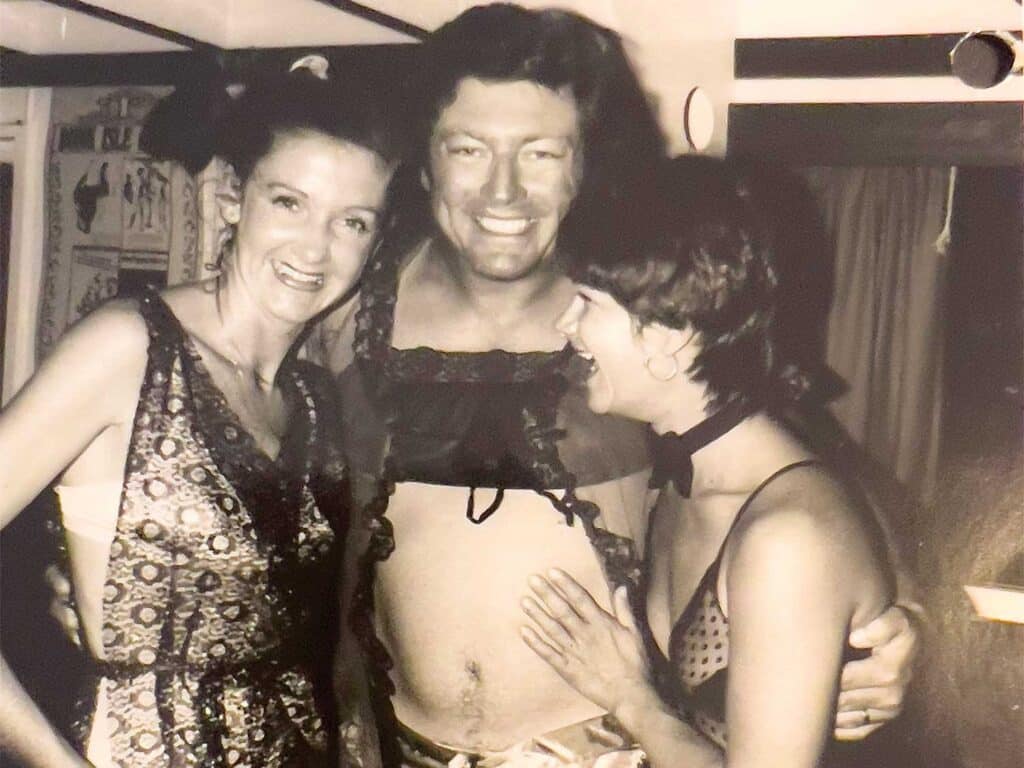
The Legend Grows
Choate eventually joined Hank and Gretchen Manley aboard Escapade as mate under Capt. Mike Aman and Chester Jenkins. Their goal: to release 1,000 billfish on a yearlong odyssey. They did it in 115 days, releasing 1,108 billfish, including nine grand slams and the first back-to-back super grand slams.
The feat drew headlines across the sport-fishing world, solidifying Choate’s position as more than a personality—he was a technician, a planner and a problem-solver. During this time, Choate was also a growing voice of the industry, regularly contributing to Marlin and having weekly lunches with then IGFA president and industry leader Elwood Harry.
Choate’s travels eventually took him to Australia’s Great Barrier Reef for more than a dozen seasons, where he and Capt. Peter B. Wright caught a 1,212-pound black marlin in 1982. When talking with Choate, he mentioned proudly that the Hall of Fame captain had often said, “Tim was the best unpaid mate I ever had.”
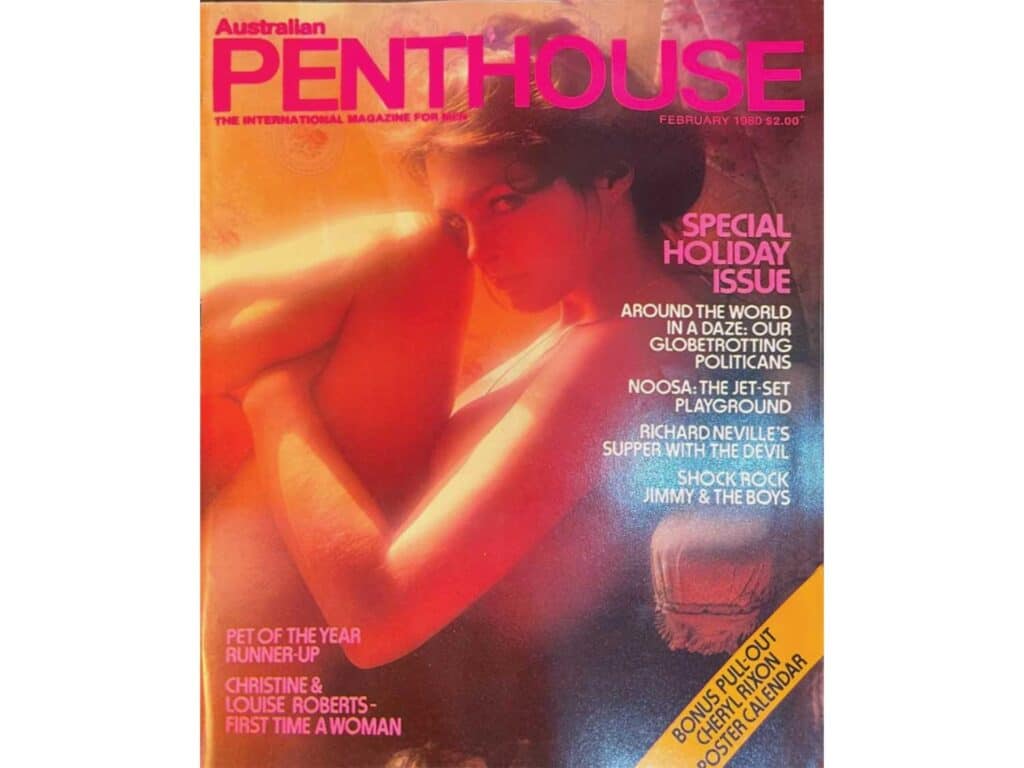
The wild scene on the reef during those days suited Choate’s larger-than-life personality, and this further fueled his legend. His antics even earned him a mention in the Australian edition of Penthouse. “We snuck the writer on board and said he was a mate,” Choate recalls with a chuckle. “They weren’t supposed to use the real names, but they did. I think some people got fired or divorced from that!”
Despite the times of debauchery, Choate was always calculating, always observing. That duality—playful yet purposeful—defined his approach to fishing and life.
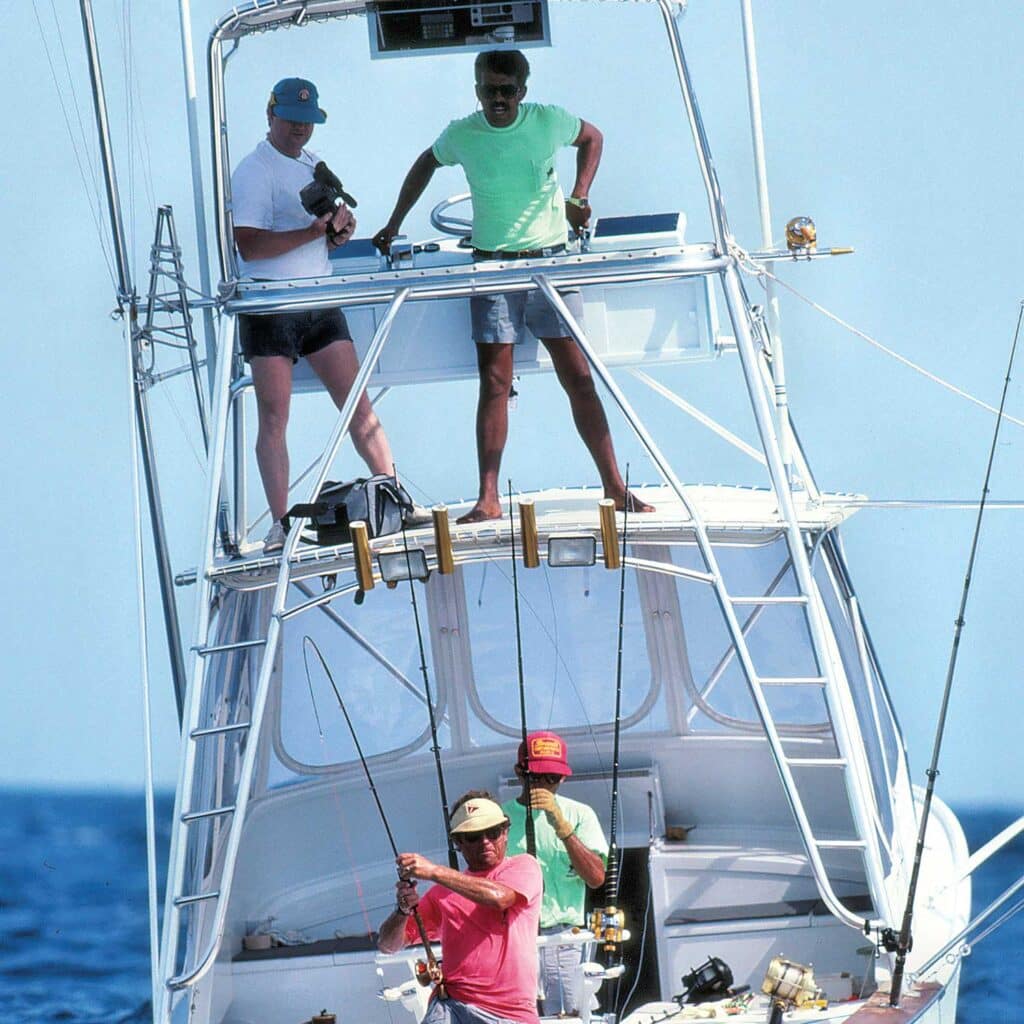
Creating Billfish Meccas
With experience in hand and an intuitive entrepreneurial spirit, Choate established Art Marina, managing charter-fishing operations throughout Central and South America that offered year-round fishing and catered to serious anglers. But that didn’t happen overnight.
Costa Rica came first. Operating out of Flamingo, his boat, Magic, shattered records, catching 1,414 billfish in 1991 and 2,140 in 1995. According to Choate, he and Capt. Bubba Carter, his competitor at the time, were among the first to really start fishing down there, helping lay the groundwork for what would become one of the world’s premier billfish destinations. But a lack of government commitment to conservation drove him north as he grew tired of watching longliners deplete the fishing.
In 1993, he opened the Fins ’n Feathers lodge in Guatemala, which quickly became the world’s premier sailfish destination. Choate was among the first to recognize Guatemala’s unique bite patterns and advocated for seasonal transitions between Iztapa and Puerto Quetzal. “We fished both Costa Rica and Guatemala side by side,” he says. “Guatemala was 1.7 times better—every day, every week, every month.”

Later came Brazil and the Royal Charlotte Bank—a prolific blue marlin spot. He was among the first to base operations there, long before it became known to most traveling anglers. Then came the Galápagos, where he quietly helped develop responsible charter fishing under strict conservation regulations.
“At one point, we had 13 boats running across four countries,” he says. “It wasn’t just a business. It was a network of fisheries that helped connect people to these incredible fish.”
Choate’s approach was part science, part service. He knew the boats, the bait, the seasons. But he also knew what clients wanted. “You had to be the dock guy, the host, the personality,” he says. “It was just as much about the experience as the fish.”
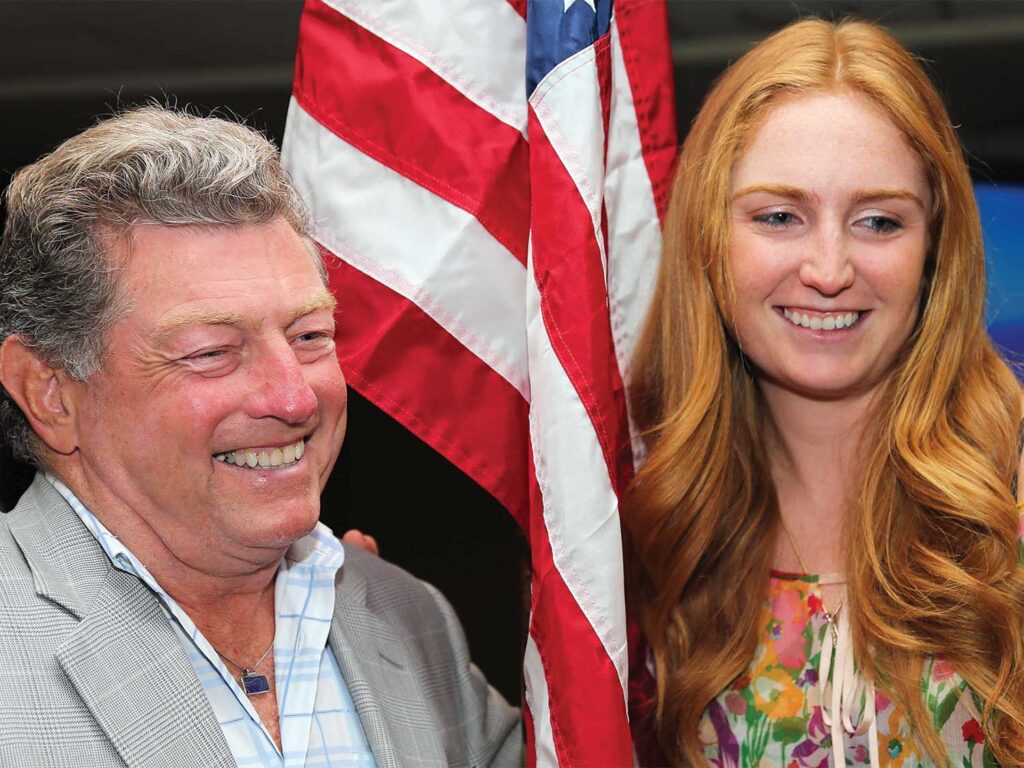
His Greatest Work
Working alongside captains Wright and Hamlin, Choate was instrumental in the early adoption and testing of circle hooks, even claiming to possibly be the first person to purposefully catch and release a billfish on a circle hook.
“After a tournament using J hooks, you would see dead sailfish floating everywhere. It was sickening. But after we started using circle hooks, you hardly saw a single [dead] one. That was it for me.”
After years of working alongside Dr. Eric Prince throughout Central America and recognizing the urgent need to protect billfish stocks, Choate took action. In 1986, he cofounded The Billfish Foundation with Win Rockefeller, serving as its first director and shaping it into one of the world’s leading billfish conservation organizations.
For nearly two decades, Choate lobbied Central American governments—Costa Rica, Guatemala and others—urging them to halt the longline harvest of billfish and exporting dead fish to foreign markets. “We were trying to stop the bleeding at the source, but it just wasn’t happening fast enough,” he says.
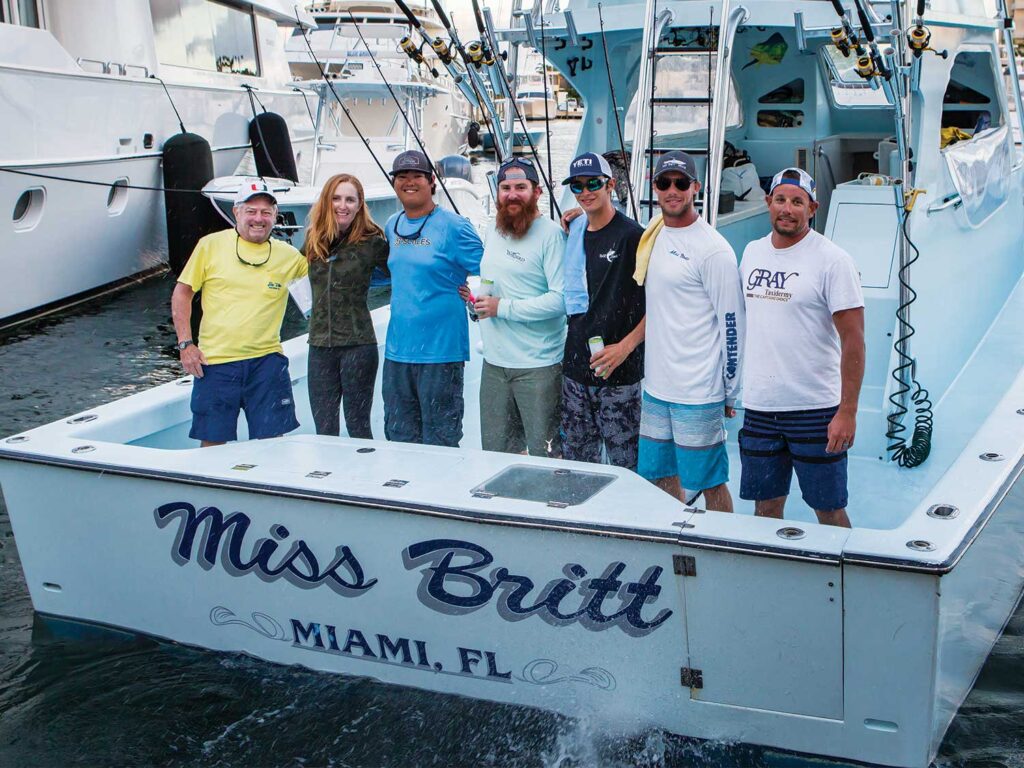
After years of lobbying Central American governments to cease longline harvests and the export of billfish to the United States with little progress, Choate shifted strategies. “If we couldn’t stop the export, maybe we could stop the import,” he recalls. That pivotal shift in strategy laid the foundation for the Billfish Conservation Act. Introduced in the U.S. Congress and passed after years of persistence and coalition-building, the act was signed into law on October 5, 2012, effectively banning the commercial importation of billfish into the United States. “We were the largest importer in the world,” Choate says. “That had to end.”
The legislation marked a monumental win for marine conservation. By targeting U.S. demand, Choate and his allies struck at the heart of the global billfish trade. The law specifically prohibits the sale of marlin, sailfish, spearfish and their related products in the continental U.S. In 2018, it was further strengthened through an amendment clarifying that no billfish—regardless of origin—could enter into trade within the continental United States.
And his work didn’t stop there. Still seeing gaps in international policy, Choate helped launch the Central American Billfish Association (CABA) and funded the first comprehensive socioeconomic study of sport fishing in the region. “It was the ammo we needed,” he says. “When governments saw that a live sailfish was worth seven times more than a dead one, it changed the conversation.”
In 2023, Choate spearheaded the creation of the Billfish Research and Conservation Endowment, a landmark initiative housed by the IGFA, where he serves as a trustee and is enshrined in its Hall of Fame. This endowment was designed to provide long-term, sustainable funding for the science-based management and conservation of billfish species. “The idea is to give researchers and advocates the financial backing they need to do real work—not just for one year, but for generations,” he says. “If we want billfishing to have a future, this kind of infrastructure is essential.”

The Legacy of a Legend
Now in his 70s, Choate has stepped back from the physical demands of travel and operations. But his mind is still on the mission. He recently stepped down from his role as chairman of Wild Oceans, the nation’s oldest saltwater conservation organization, and supports the IGFA’s Billfish Research and Conservation Endowment Fund. “I may not run as hard as I used to,” he admits, “but I can still write a check. And I’ll do whatever I can.”
Despite all his success, Choate remains a fisherman at heart. And despite having health issues that severely limit his eyesight, he is still fishing more than most, having recently returned from trips to the Galápagos and the Mediterranean.
For all the records, all the legislation and all the fish, it’s those moments in between—on the dock, in the cockpit, sharing a drink and a laugh—that Choate remembers most fondly.
In many ways, Choate is the bridge between two eras—the old-school frontier days of big-game fishing, and the modern movement rooted in conservation and science. His work ensures that the next generation of anglers will have oceans worth fishing—and, just maybe, a few stories worth telling off the record too.
